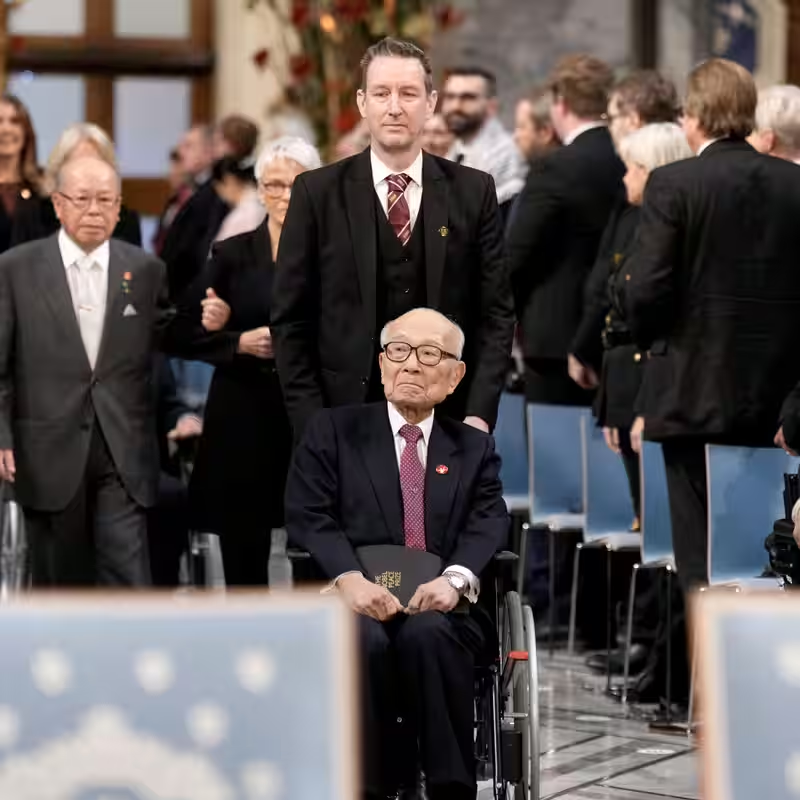When the Nobel Peace Prize was awarded in 2024 to Nihon Hidankyo—a grassroots coalition of Japanese atomic bomb survivors—it wasn’t just a recognition of past suffering. It was a powerful validation of decades of relentless advocacy for nuclear disarmament, human dignity, and peace.
Formed in the aftermath of the U.S. atomic bombings of Hiroshima and Nagasaki in 1945, Nihon Hidankyo (the Japan Confederation of A- and H-Bomb Sufferers Organizations) has spent nearly 80 years amplifying the voices of hibakusha—the survivors—through public testimonies, international campaigns, and quiet, unwavering moral leadership.
Who Is Nihon Hidankyo?
Nihon Hidankyo is not a government body or a celebrity-led NGO. It’s a collective of ordinary citizens—teachers, shopkeepers, mothers, and elders—who lived through unimaginable horror and chose to respond not with vengeance, but with a mission: “No one else should ever suffer as we did.”
Since its founding in 1956, the group has documented and shared thousands of firsthand accounts from survivors. These testimonies aren’t just historical records—they’re urgent calls to action, delivered in schools, parliaments, and UN forums worldwide.
The 2024 Nobel Peace Prize: A Long-Overdue Honor
The Norwegian Nobel Committee awarded the 2024 Peace Prize to Nihon Hidankyo “for its efforts to achieve a world free of nuclear weapons and for demonstrating through witness testimony that nuclear weapons must never be used again.”
At the time of the award, the average age of surviving hibakusha was over 85. The Nobel recognition came as both a tribute and a race against time—to preserve their stories before they’re lost to history.
Why This Matters Now More Than Ever
In an era of renewed nuclear tensions—from Russia’s threats in Ukraine to North Korea’s missile tests and stalled arms control treaties—the message of Nihon Hidankyo feels chillingly relevant.
“They didn’t just speak about the past,” said Nobel Committee Chair Berit Reiss-Andersen. “They warned us about the future.”
Key Achievements of Nihon Hidankyo
- Collected over 10,000 survivor testimonies since the 1950s
- Instrumental in Japan’s 1976 Atomic Bomb Survivors Relief Law
- Advocated globally for the 2017 UN Treaty on the Prohibition of Nuclear Weapons
- Organized annual peace memorial ceremonies in Hiroshima and Nagasaki attended by global leaders
- Trained younger generations as “legacy speakers” to continue sharing stories
Table: Nihon Hidankyo by the Numbers
| Category | Detail |
|---|---|
| Founded | 1956 |
| Headquarters | Hiroshima & Tokyo, Japan |
| Estimated Survivors in 1945 | Approx. 650,000 |
| Registered Hibakusha (2024) | About 108,000 |
| Nobel Peace Prize | 2024 |
The Human Face of Nuclear War
One of Nihon Hidankyo’s most powerful tools is personal narrative. Take Setsuko Thurlow, a Hiroshima survivor who spoke at the 2017 UN treaty signing: “I was 13. I saw my classmates vaporized. I carry their voices with me.” Though Thurlow is not formally part of Nihon Hidankyo, her work embodies its spirit.
Similarly, members like 92-year-old Toshiyuki Mimaki, who lost his entire family in Nagasaki, have spent decades touring Europe and North America, standing in school auditoriums to say: “This is what a nuclear bomb does to human beings.”
A Legacy Beyond Borders
The 2024 Nobel Prize wasn’t just for Japan—it was for humanity. By honoring Nihon Hidankyo, the committee reminded the world that peace isn’t abstract. It’s built on memory, empathy, and the courage to say “never again.”
As one survivor wrote in a letter to the UN: “We are the last witnesses. You are the first generation that can abolish nuclear weapons. Do not fail us.”
Looking Ahead
With fewer than 100,000 hibakusha still alive—and their numbers shrinking daily—the work of Nihon Hidankyo is entering a new phase: digital archiving, youth education, and global coalition-building.
Their Nobel Prize isn’t an endpoint. It’s a megaphone.




